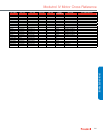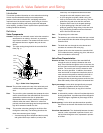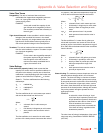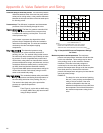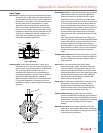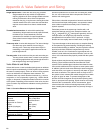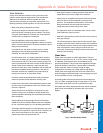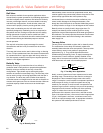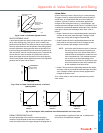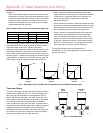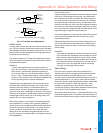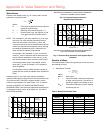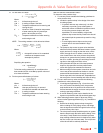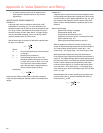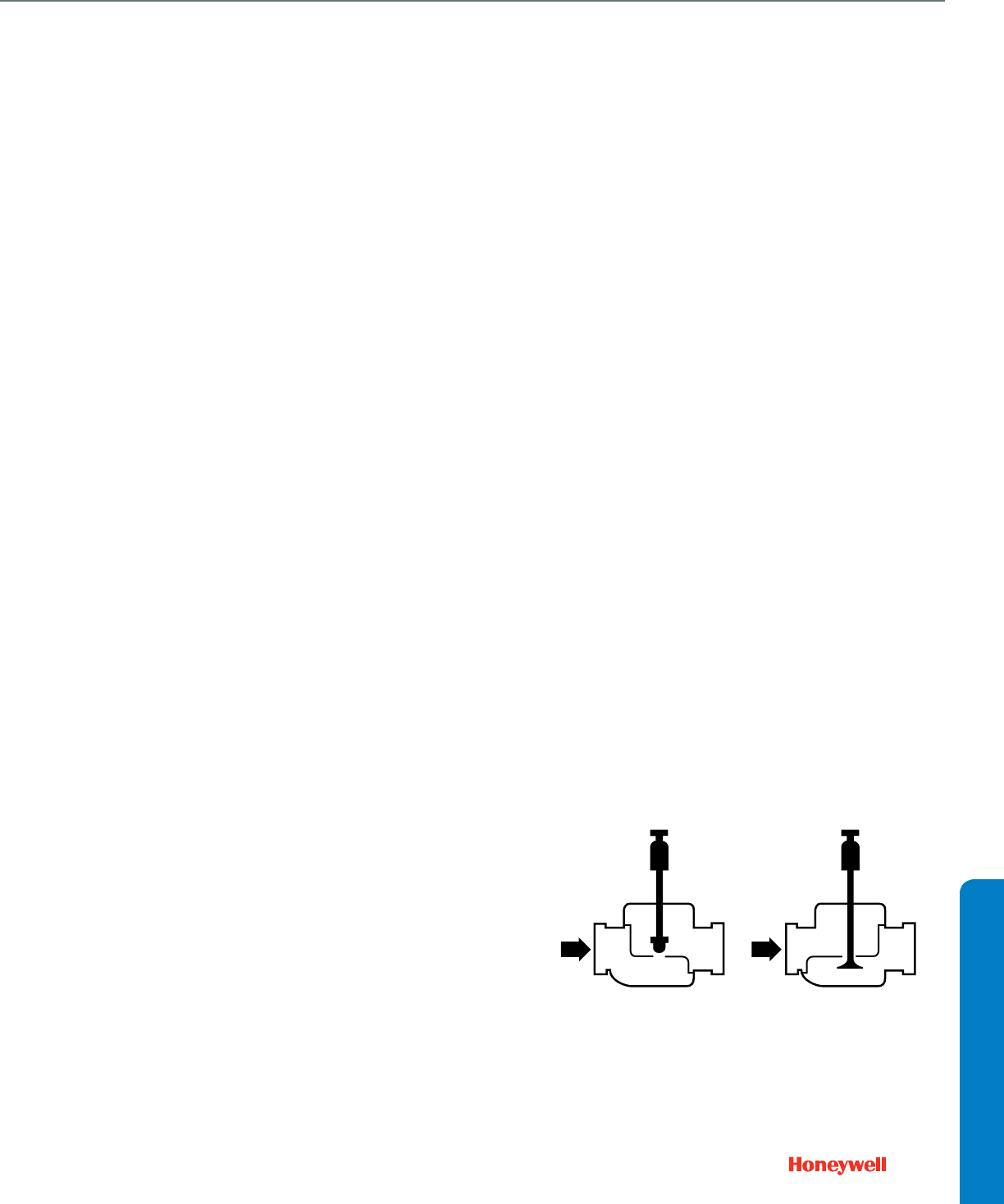
249
APPENDIX
Valve Selection
Proper valve selection matches a valve to the control and
hydronic system physical requirements. First consider the
application requirements and then consider the valve
characteristics necessary to meet those requirements. The
following questions provide a guide to correct valve selection.
— What is the piping arrangement and size?
The piping arrangement indicates whether a two-way or
three-way mixing or diverting valve is needed. The piping
size gives some indication of whether the valve requires a
screwed end or a flanged end connection.
— Does the application require two-position control or
proportional control? Does the application require a normally
open or normally closed valve? Should the actuator be direct
acting or reverse acting?
In its state of rest, the valve is normally open or closed
depending on the load being controlled, the fluid being
controlled, and the system configuration.
For chilled water coils, it is usually preferable to close the
valve on fan shutdown to prevent excessive condensation
around the duct and coil, and to save pumping energy. This
may be accomplished with either normally closed valves or a
variety of other control schemes. Lower cost and more
powerful normally open valve assemblies may be used with
the close-on-shutdown feature and allow, in the case of
pneumatic systems, the capability to provide heating or
cooling in the event of air compressor failure.
Converter control valves should be normally closed and
outdoor air preheat valves should be normally open.
— Is tight shut-off necessary? What differential pressure does
the valve have to close against? How much actuator close-
off force is required?
Valves should never be allowed to "dead head" a pump
unless the pumps are controlled by variable speed drive
systems capable of detecting such conditions and shutting
down the pumps.
Single-seated valves provide tight shut-off, while double-
seated valves do not. Double seated valves are acceptable
for use in pressure bypass or in-line throttling applications.
The design and flow capacity of a valve determine who much
actuator force is required for a given close-off. Therefore, the
valve must first be sized, then, the valve and actuator
selected to provide the required close-off.
— What type of medium is being controlled? What are the
temperature and pressure ranges of the medium?
Valves must be compatible with system media composition,
maximum and minimum temperature, and maximum
pressure. The temperature and pressure of the medium
being controlled should not exceed the maximum
temperature and pressure ratings of the valve.
For applications such as chlorinated water or brine, select
valve materials to avoid corrosion.
— What is the pressure drop across the valve? Is the pressure
drop high enough?
The full open pressure drop across the valve must be high
enough to allow the valve to exercise control over its portion
of the hydronic system. However, the full open pressure drop
must not exceed the valves rating for quiet service and
normal life. Closed pressure drop must not exceed valve and
actuator close-off rating.
Globe Valve
Globe valves are popular for HVAC applications. They are
available in pipe sizes from 1/2 in. to 12 in. and in a large variety
of capacities, flow characteristics, and temperature and
pressure capabilities. They provide wide rangeability and tight
shutoff for excellent control over a broad range of conditions.
Globe valves are made in two-way, straight or angle
configurations and three-way mixing and diverting designs.
Globe valves close against the flow and have arrows on the
body indicating correct flow direction. Incorrect piping can result
in stem oscillations, noise, and high wear.
A two-way globe valve has one inlet port and one outlet port
(Fig. 5) in either a straight through or angle pattern. The valve
can be either push-down-to-close or push-down-to-open.
Pneumatic and electric actuators with linear motion to operate
globe valves are available for operation with many control
signals.
Fig. 5. Two-Way Globe Valves.
IN IN
PUSH-DOWN-TO-CLOSE
(DIRECT ACTING)
PUSH-DOWN-TO-OPEN
(REVERSE ACTING)
C2328A
Appendix A: Valve Selection and Sizing



